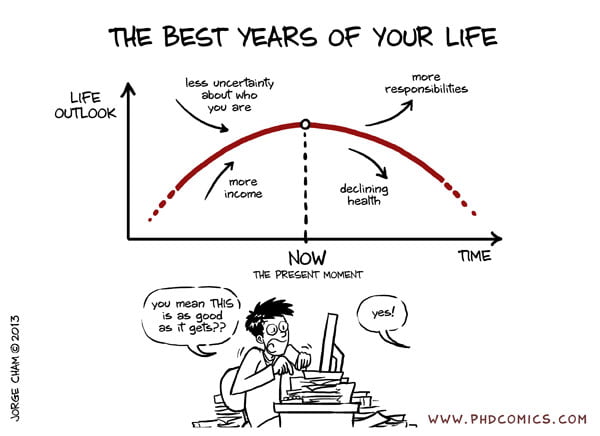Urban Nomads: Freedom to Roam
Whenever I think of the multitude of phone companies today, I remember that once upon a time, there was ONE phone company. Yes, one – “Ma Bell”. On the AT&T website, they proudly post this fact: “For much of its history, AT&T and its Bell System functioned as a legally sanctioned, regulated monopoly.” While on paper this makes a degree of sense; in practice, a monopoly is still a monopoly and we, the general public, had to deal with it. Lily Tomlin garnered many laughs when she created her character Ernestine the Telephone Operator. One of my favorite lines that Ernestine would use is: “We don’t care. We don’t have to. We’re the Phone Company.”
The move toward multiple service providers as well as technological advances has given rise to the ability of more people to become mobile than ever before. Over the last few years, I have seen more professional people with PDA’s and Smartphones than I ever could have imagined when I first became smitten by the Palm Pilot.
DEVICES
Ever since we broke the bonds of the mainframe computer, we have been pushing the envelope of what we can do “un-tethered”, if you will. With that in mind, what kinds of mobile equipment are you utilizing in your enterprise? Advances in mobile devices, allowing us to do more than just voice communication, have opened up a huge opportunity for information to be shared wherever and whenever. Blackberries and iPhones have blasted other devices into re-thinking their core systems. PALM has even retired its venerable PalmOS in favor of “WebOS” to power a new mobile device, the PALM PRE. This is tough for me; I’ve been using PALM devices that utilized PalmOS for so long that I can’t think of using anything else – heck, I still have my old IIIXe even though I use a now ancient T5 (if you know what those are, then you know how I feel).
Of course there are the traditional mobile devices called laptops and notebooks, but what about the “netbook?” These light and functional devices can be as little $400 and began a marked increase in presence in 2007. They may be something of a major player in the coming years ahead.
COMMUNICATION
The basic tenet of all of these devices is communication. Being able to send and receive information fast and reliably has led to innovations in handheld units such as a full keyboard or icons that open applications with a tap of a finger instead of fishing for a stylus. This is great, since I could never get the hang of using a traditional phone keypad to send messages. Just how DO the kids do that? Don’t forget the camera, the web browser, the calendar, voice recorder, and every other app that you can think of – and I think you can still make phone calls too.
THE WORK ASPECT
For the enterprise, web-based apps and email are the best reason to have mobile computing devices among their staff. Obviously, the company software for ERP, CRM, etc. that can be accessed from a browser is the number one reason, but are you aware of all the other tools that your people use to do their jobs? Web-based apps like LinkedIn, which can be accessed from any browser, offer opportunities to connect to other people for business related activities. There is a push within CRM circles to start utilizing social networks for business purposes. Even YouTube can be utilized to create business opportunities. My favorite example of a company using this medium is here.
Many of these web apps are accessed not by people tied to a desk, but by individuals on the go. Uploading and downloading images and video from cell phones, hitting WebPages while riding the bus, connecting to CRM contacts in line at the supermarket (yes, I’ve seen that), updating inventory numbers from a restaurant; the list goes on. You’ve probably used some of these apps and not even given it any thought. Ever check the status of a package online?
DRAWBACKS
Although there are definite benefits that you can get from mobile computing, like everything else, it too has some drawbacks.
Even though there is already a widespread use of this technology, the coverage can still be limited in some areas. Generally, you can only access certain features of your mobile device in key locations. Think of access to Wi-Fi for your laptop. Even though the infrastructure is getting better (mostly), finding a “hotspot” can be an arduous task in and of itself. In my area, I was excited to hear that a new coffee shop was opening in town and they were going to offer internet access – and they’re only 6 miles away!
Another challenge that mobile computing has encountered is its power consumption. Many mobile devices such as laptops use batteries that usually last around 4 hours. Batteries with long life are in high demand for these devices and the effort to improve the durability of batteries has been under way for a few years.
PUT IT TO USE
Whether you are using a laptop, netbook, or Smartphone, I hope that I am just re-affirming that which you already know: computing is more mobile now than ever, and will continue in this trend. The major advantage of mobile computing over traditional systems is the mobility it affords with access to data and business functions anywhere. The question is will you leverage this concept to your advantage?
Are you currently using Mobile Technology and want to share how it has worked for you? Drop me a line at gilesec@xonitek.com and I’ll put all the ideas together at a later date!
Related Articles…
From The Economist, April 10th, 2008 –The New Oasis
From The Economist, April 10th, 2008 – Nomads At Last
(Disclaimer: The links in the article are for informational reference only and not
Ed Giles is a Specialist with the XONITEK Consulting Services Team. Ed brings years of experience in Manufacturing, Shipping/Receiving, Material Handling/Inventory Control, Warehouse Distribution, and many other strategic technologies to the XONITEK team.
Contact him at gilesec@xonitek.com.
endorsed by XONITEK Corporation or its employees)







